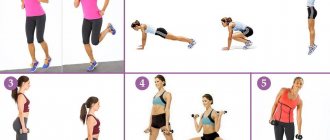Share:
Training in a CrossFit gym has its own characteristics. First of all, it is high intensity, several times higher than this indicator for powerlifters or bodybuilders. Due to the extreme workload, CrossFitters often suffer from nausea after working out in the gym. What to do about it, how to avoid it, and how critical is it?
General information
Before we look at the main causes of nausea after exercise, let’s figure out what nausea is as a physiological symptom. Nausea is a defense mechanism of the body that allows you to remove excess accumulated toxins. At the same time, most of the minerals and salts in the body are eliminated.
The causes of nausea are the accumulation of toxins or irritation of the mucous membrane of the stomach and intestines. Nausea is caused by an excess of bile or a lack of stomach acid, which leads to rotting of food. In addition, nausea can be caused by blood intoxication, which the body fights in this way.
During the training process, the body works in stress mode, which implies an emergency release of energy, which is accompanied by the release of additional toxins and irritation of all body systems. Therefore, nausea during or after exercise occurs as a result of stress.
Causes of nausea after exercise
So, if we consider the causes of nausea after training in the gym, we can distinguish two main factors: the accumulation of toxins and irritation of the gastric mucosa.
However, there are other provoking conditions:
- pressure;
- initially feeling unwell;
- gastrointestinal overload;
- lack of water/salt;
- lack of blood sugar;
- overheat;
- decreased blood flow to the gastric mucosa;
- overload and, as a result, exhaustion of strength;
- third party factors.
Pressure
Blood pressure problems occur due to a lack of oxygen. In the process of performing heavy basic exercises, the pressure first increases critically. This can be the result of improper breathing (for example, holding your breath while performing a deadlift), or simply an excessively high load. Then it may drop sharply, which is accompanied by nausea.
Initially feeling unwell
If you initially felt unwell - you were poisoned the day before or are experiencing a slight malaise caused by a cold, then this, in turn, can lead to nausea during training.
Gastrointestinal tract overload
In an effort to eat on a schedule, people often don't take into account their workout time. The optimal time to eat is 1.5 hours before training. If you did not have time to refuel in time, use a gainer or protein shake, which practically does not burden the gastrointestinal tract.
Lack of water/salt
This is due to high intensity training, which leads to profuse sweating. Along with sweat, sodium ions also leave the body. This can be easily stopped by drinking mineral water before or during training.
Lack of blood sugar
This is the flip side of proper nutrition. If you didn't get enough carbohydrates at your last meal, your body may be slow to release glycogen into your bloodstream, leading to low blood sugar and resulting in severe nausea.
Overheat
If you exercise outside or are in the drying phase, you are constantly losing water due to the external heat. If the body is not cooled enough (for example, during a cross-country race), then such overheating can lead to nausea and other unpleasant consequences. Overheating often causes pressure surges and even leads to fainting.
Reduced blood flow to the gastric mucosa
As a rule, this is a medical problem associated with either anemia or pathological changes in the gastrointestinal tract itself. If you suffer from insufficient blood flow to the lining of the gastrointestinal tract, you need to see a doctor to correct this problem.
Third party factors
Among other things, nausea can be caused by third-party factors. These include, for example, an unpleasant smell in the gym in winter, when the air conditioner is not working at full capacity, an allergy to the deodorant of a training partner, and the like.
We must not forget about the most important factor that causes nausea - the desire for new achievements. Increased intensity of training leads to the effect of overtraining.
What is the overload of the body? It's simple. During the process of glycogen release, toxic alkaloids accumulate, which the liver normally copes with. However, if the stress is excessive, then under the influence of adrenaline it will be difficult for you to determine an adequate load for yourself. Therefore, after the adrenaline subsides, overload and an abundance of toxins in the blood can lead not only to nausea, but also to vomiting.
If you don't know why you feel sick after a workout, try comparing your load over the last few sessions and WODs.
Main causes of nausea
There are several main factors that cause nausea during strength training. As a rule, there is one reason to blame, but it also happens that this condition is provoked by a number of factors.
Then the consequences can be much more unpleasant. For example, vomiting or loss of consciousness. But first things first.
Blood acidification
In the vast majority of cases, post-workout nausea is a consequence of blood acidification.
In order not to go into details of biochemical processes, we will try to explain everything in accessible language.
In biochemistry, there is such a thing as the acid-base balance of the blood. It is designated as pH. This is a stable value that maintains the constancy of the internal environment of the body (homeostasis).
Normal blood pH levels are 7.35-7.4. This is the same constant as, for example, body temperature. When blood pH increases or decreases, a number of unfavorable changes occur.
Manifestations of changes in blood pH include nausea, dizziness, rapid heartbeat, vomiting or loss of consciousness.
This process is called acidification. When the blood acidifies to 7.0 - 6.8, all of the above symptoms appear. When it drops to 6.6, death occurs.
There are several reasons for this phenomenon:
- Some diseases (for example, diabetes)
- Abrupt climate change (moving to highlands)
- Poor nutrition (prevalence in the diet of foods that acidify the blood)
- Intense physical activity
We will only look at the cause caused by exercise in detail.
The following are responsible for maintaining normal blood pH:
- Kidneys
- Lungs
- Blood buffer systems
During intense power loads, muscles release products of their activity - metabolites - into the circulatory system. These include carbon dioxide, lactic acid and a number of other compounds. Entering the blood, they acidify it.
As a rule, the more trained a person is, the better the body cleanses the blood of waste products.
When the processes of cleansing from metabolites are balanced, the athlete can perform effective intense physical activity for a long time.
But for beginners or poorly trained people the picture is somewhat different. Even a light power load causes acidification of their blood, which increases more and more towards the end of the workout.
Buffer systems do not have time to cleanse the blood of metabolites coming from the muscles and the pH begins to decrease. The first signal about this is the appearance of nausea.
Stop exercising as soon as the first signs of nausea appear.
If you ignore the body’s primary signals, then further events will develop according to a more severe scenario – dizziness, vomiting or even loss of consciousness.
In other words, nausea indicates that the training load was excessive and the body does not have time to cope with it.
Working out with a full stomach
A common cause of nausea during or after exercise is doing the exercise with a full stomach.
In this case, with the help of nausea, the body tries to warn that it is not worth training too intensely or performing a series of exercises that directly affect the abdominal area.
Among these movements:
- Any abdominal crunches
- Different types of squats
- Bent-overs with a barbell or hyperextension
- Deadlift
If you continue training with a full stomach, then most likely the body will get rid of the “extra” using the gag reflex.
This is usually a mistake that beginners make.
As a rule, one or two such activities are enough to understand that food must be completely digested before strength training.
Read more in the article “Is it possible to train on an empty stomach.”
Hypoglycemia
Hypoglycemia is a sharp decrease in blood sugar levels. The condition is typical for people with diabetes.
Sometimes hypoglycemia has physiological causes. For example, too intense, stressful power loads or glucose (carbohydrate) deficiency.
Nausea is one of the symptoms of this condition. Also, a decrease in sugar is characterized by dizziness, rapid heartbeat, increased sweating, or even causeless fear and aggression.
As you can see, the symptoms of hypoglycemia are similar to blood acidification. The only difference is that with a decrease in blood pH, appetite completely disappears, and with hypoglycemia, on the contrary, you suddenly want to eat something.
Usually has a craving for sweets. To quickly stop this condition, take a portion of simple carbohydrates.
Sweet carbonated drinks help stop sports hypoglycemia. Sugar, honey, chocolate and the like are also suitable.
Overheating of the body (heatstroke)
A rare cause of nausea in the gym associated with high air temperatures.
Modern fitness centers have powerful air conditioning systems. Therefore, the temperature is suitable for performing strength exercises even in the hot season.
In addition, during class you need to drink water, which has a beneficial effect on the body’s thermoregulation.
In general, overheating is more common in physical activities that take place outdoors.
Running, cycling, or walking in hot weather can trigger heatstroke, the main symptom of which is nausea and weakness.
Other reasons
The causes of nausea during class may be associated with certain diseases, such as anemia . This is iron deficiency in the body.
If symptoms recur, contact your doctor and get the necessary tests. Moderate intensity physical activity is not contraindicated.
Increased blood pressure is a common cause of nausea in people with hypertension. Exercises where the head is lower than the feet, static exercises or work without a break are contraindicated for them.
There may also be a decrease in blood flow to the stomach area.
If you use weightlifting belts or corsets, they can compress the abdominal cavity and, as a result, cause nausea.
Prevention
What to do if you feel nauseous after training? No one is immune from nausea. First of all, you need to drink a sufficient amount of cool liquid and, if possible, eliminate the cause of the nausea itself. If nausea does not stop, the training process must be interrupted. But how can you reduce the risk of nausea?
There are some simple recommendations for a number of parameters:
- Training diary. It is needed so that you do not overload yourself in your next workout. Always write down not only your current results, but also make plans for your next workout. This will reduce the chance of overload.
- Nutrition. Eat food according to the precepts of Soviet trainers - that is, no later than 2 hours before the workout itself. At the same time, you need to eat in moderation, and before the workout itself it is better to load up on carbohydrates, and not proteins and certainly not fats.
- Breath. We have already written about the importance of breathing in each exercise in many articles. Proper breathing stabilizes blood pressure during the approach; in addition, it promotes complete aerobic glycolysis, which will not allow sugar to fall below a certain level.
- Liquid. Protects against overheating, in addition, during the training process you will experience severe dehydration and loss of sodium ions. Good mineral water without gas will help stop this process.
Causes of nausea and dizziness during training
Poor nutrition
Lightheadedness and nausea often accompany people who ate heavily or drank too much liquid before training. During strength exercises, there is an outflow of blood from the digestive organs and a flow to the muscles. In this state, the process of digesting food slows down, and the body, stressed by training, can reject undigested food.
In this condition, nausea risks occurring when performing abdominal exercises. When twisting and straining the muscles, the pressure inside the stomach increases, which causes the gag reflex. In such cases they say “food asks to come out.”
To avoid this, try to start training no earlier than 1.5-2 hours after eating. Remember that protein and fatty foods take the longest to digest. You should also be careful with drinking, drinking no more than 0.5 liters of liquid an hour before training.
Important! If you follow these instructions, and nausea continues to bother you, it makes sense to visit a gastroenterologist. You may have a deficiency of digestive enzymes that needs to be corrected.
Heatstroke
When performing strength exercises, the athlete’s body releases thermal energy 20 times more than at rest. At the same time, every 5 minutes the athlete’s body temperature increases by 1°C. In this state, a person begins to sweat no worse than in a bathhouse.
The advantage of this state is the active burning of fat. But there is also a downside. By giving off thermal energy, the athlete provokes loss of strength, dizziness and confusion. If you fail to respond to body signals in a timely manner, you can get heatstroke.
This problem is most relevant for small gyms where many people work out and there is no ventilation system. If such a problem occurs, do not hesitate to come up and open the window for ventilation or draw the attention of the administration to this fact.
Alternatively, pause periodically to wet your head, face, and hands with cool water, breathe, and drink water.
Dehydration
In addition to overheating the body and the possibility of heatstroke, we must not forget about another danger. Active sweating with insufficient ventilation can lead to serious dehydration. And this is a dangerous condition that leads to nausea and lightheadedness.
To prevent this dangerous condition, you need to achieve normal air exchange in the gym. It is also important to periodically replenish fluid reserves in the body. It is recommended not to drink ordinary water, since the body loses sodium through sweating, and pure water does not help restore its level. As a result, sodium levels can drop to a critical level, which will only worsen the athlete’s well-being.
The solution to the problem is simple. During training, it is better to drink carbohydrate-electrolyte drinks. This is the most effective way to maintain water-salt balance in the athlete’s body and maintain normal well-being.
Low sugar level
Nausea and vomiting may occur in individuals who begin exercise with low blood sugar. Typically, this condition accompanies an athlete who is hungry before training or is on a strict diet. In addition to low sugar, the athlete’s body begins to lack vitamins and other nutrients. This affects your well-being, causing fatigue, dizziness, muscle pain and even migraines.
If all your symptoms point to low sugar levels, try to correct the situation by eating candy or drinking a cup of sweet tea. After about 15-20 minutes, your health will return to normal. But this is a local solution to the problem. If each of your workouts is accompanied by weakness and fatigue, reconsider your diet and abandon strict diets.
Low pressure
Hypotensive people – people with low blood pressure – often suffer from dizziness and nausea during exercise. Here, the reason for poor health is not even the tension experienced, but the athlete’s need to constantly change body position when performing exercises. At such moments, a person’s sweating increases, vision becomes dark, shortness of breath appears, and in severe cases, loss of consciousness is possible.
It is impossible to completely eliminate such a problem, which means you need to develop preventive measures to protect your training from health problems. To do this, monitor your blood pressure on the training day and reschedule your workout if your blood pressure is too low.
Ask the fitness instructor to adjust the training plan so that the exercises are not accompanied by a sudden change in the body in space. Alternatively, avoid elements that cause hypotension.
Important! Consult a doctor who will advise you on proper nutrition, including exercise in the gym, and also prescribe medications that normalize blood pressure.
Leg workout
Very often, an athlete experiences dizziness and nausea after performing leg pumping exercises. The explanation here is as follows: leg training is usually performed in a horizontal position, or even in a position where the head is lower than the legs. When there is strong tension in the lower extremities, blood flows from the upper body to the legs.
Blood pressure in this position invariably decreases. And when, after performing the exercise, the athlete returns to a vertical position, the person feels a sharp darkening in the eyes, nausea and weakness, even to the point of loss of consciousness. All this indicates a sharp change in body position against the background of low pressure. Darkening of the eyes and profuse sweating indicate just this.
To prevent problems with well-being, we advise you not to jump up after pumping your legs, but to lie in this position for a few more minutes, giving the body time to recover and distribute blood evenly throughout the body.
Improper breathing
Often, dizziness and nausea occur in beginners who, working at the limit of their capabilities, breathe incorrectly. Inexperienced athletes, when tense, begin to breathe “chest”, while, when at rest, we breathe “belly”, i.e. We carry out abdominal breathing with the diaphragm involved.
You will need the help of an instructor who will teach you how to inhale and exhale correctly while performing a specific exercise, as well as hold your breath when necessary (for example, when working with a barbell). Once you understand the basics of proper breathing, you will experience much fewer problems with your well-being.











